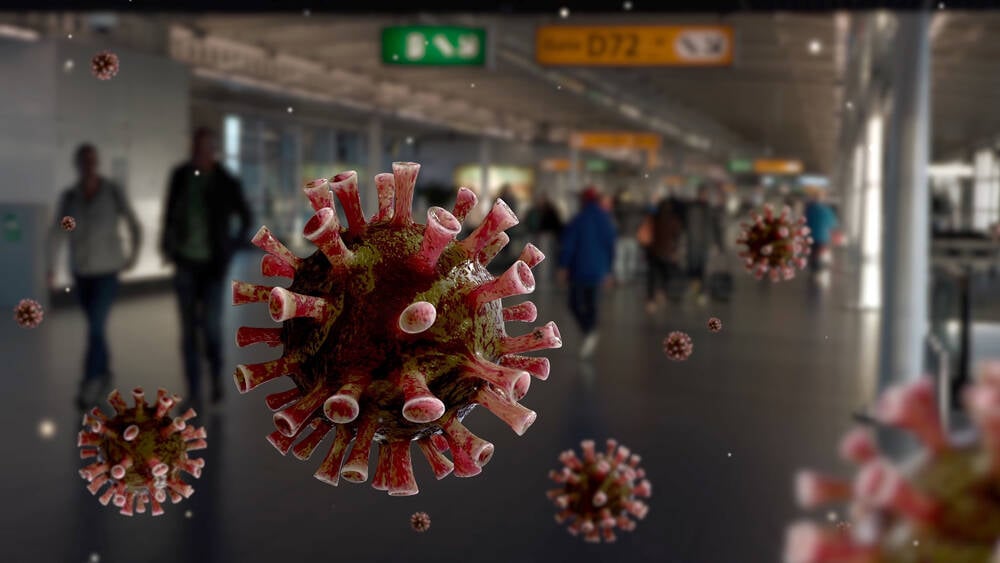Petaflops Help Scientists Understand Why Some COVID-19 Variants Are More Contagious

Supercomputer-power calculations have helped to uncover how certain variants of the COVID-19 virus "improve" – ie, become more contagious – through their binding energy with human cells.
A lab at Ohio’s University of Toledo has specialized in understanding molecular recognition, the process by which two molecules find each other, and bind together to act-out a biological function.
At the start of the pandemic, Xiche Hu, associate professor at the department of chemistry and biochemistry, thought the work might be well placed to help explain the way the nefarious virus spreads among humans.
Through a COVID-inspired scheme, he bid for resources from the Ohio Supercomputer Center (OSC) to cut the time taken for calculation set to describe the coronavirus's binding processes. Collectively, OSC supercomputers provide a peak computing performance of 7.5 Petaflops. The center also offers approximately 16 petabytes of disk storage capacity distributed over several file systems, plus more than 14 PB of available backup tape storage.
“We immediately realized that there were many molecular recognition issues, so we felt duty-bound to study this,” Hu said. “The Ohio Supercomputer Center (OSC) had called for researchers studying the coronavirus, offering a special grant. We applied and were granted priority access and an unlimited budget for 18 months.”
Joined by two doctoral students, Pawan Bhatta and Majed Aljohani, he began looking at differences between the original SARS-CoV-2 and new so-called variants of concern (VoC) at the atomic level. VoC are those strains which health orgs consider problematic because of their increased transmissibility, morbidity or mortality rates.
Using supercomputing resources, the team were able to perform high-level calculations at an accelerated rate.
“If we did one of these calculations in our lab, we are talking about weeks or months, but when we do it at OSC we can finish it within days,” Hu said.
- Foxconn expands Vietnam factories, perhaps to help Apple diversify beyond China
- Singapore pulls plug on COVID tracking program
- No, AI can't tell if you've got COVID-19 by listening to your coughs
- Corporate execs: Get back, get back, to the office where you once belonged
“We often need to do multiple calculations in parallel, so the OSC resources are instrumental to this research.”
The mission was to find the binding energy between COVID-19’s spike proteins and the human receptors within the cell, because higher binding energy means the virus becomes more contagious.
The results showed that four out of five variants studied exhibited a common mutation, N501Y, which increased the binding energy between parts of the human cell and the virus. Meanwhile, the mutation also helps the virus to create a network of water molecules that could increase infection rates.
The hope is the findings could help the scientists develop methods to fight the COVID-19 pandemic by “screening a library of compounds to find which molecules can block out the binding site, preventing infection,” Hu said. ®
Google Leverages AI To Automatically Lock Phones During Theft
Amid increasing incidents of mobile phone thefts, Google has launched an AI-based feature that automatically locks the s... Read more
Microsofts Emissions Surge Nearly 30% Amid AI Demand Growth
Microsoft has reported a nearly 30% increase in its emissions from 2020 to 2023, underscoring the challenges the tech gi... Read more
Impact Of AWS Leadership Change On The Global AI Race
The recent leadership transition at Amazon Web Services (AWS), with Adam Selipsky stepping down and Matt Garman taking t... Read more
The Global Impact Of App Stores On Technology And Economy
Since Apple launched its App Store in 2008, app stores have become a central feature of the digital landscape, reshaping... Read more
Alibaba's Cloud Investment Strategy: Fuelling AI Innovation And Growth
Alibaba Group's cloud business, Alibaba Cloud, has emerged as a powerhouse in the tech industry, spearheading innovation... Read more
Elon Musk Takes On Government 'Censorship': A Clash Of Titans In The Digital Arena
Elon Musk's recent endeavors to challenge government-led content takedowns mark a significant development in the ongoing... Read more

